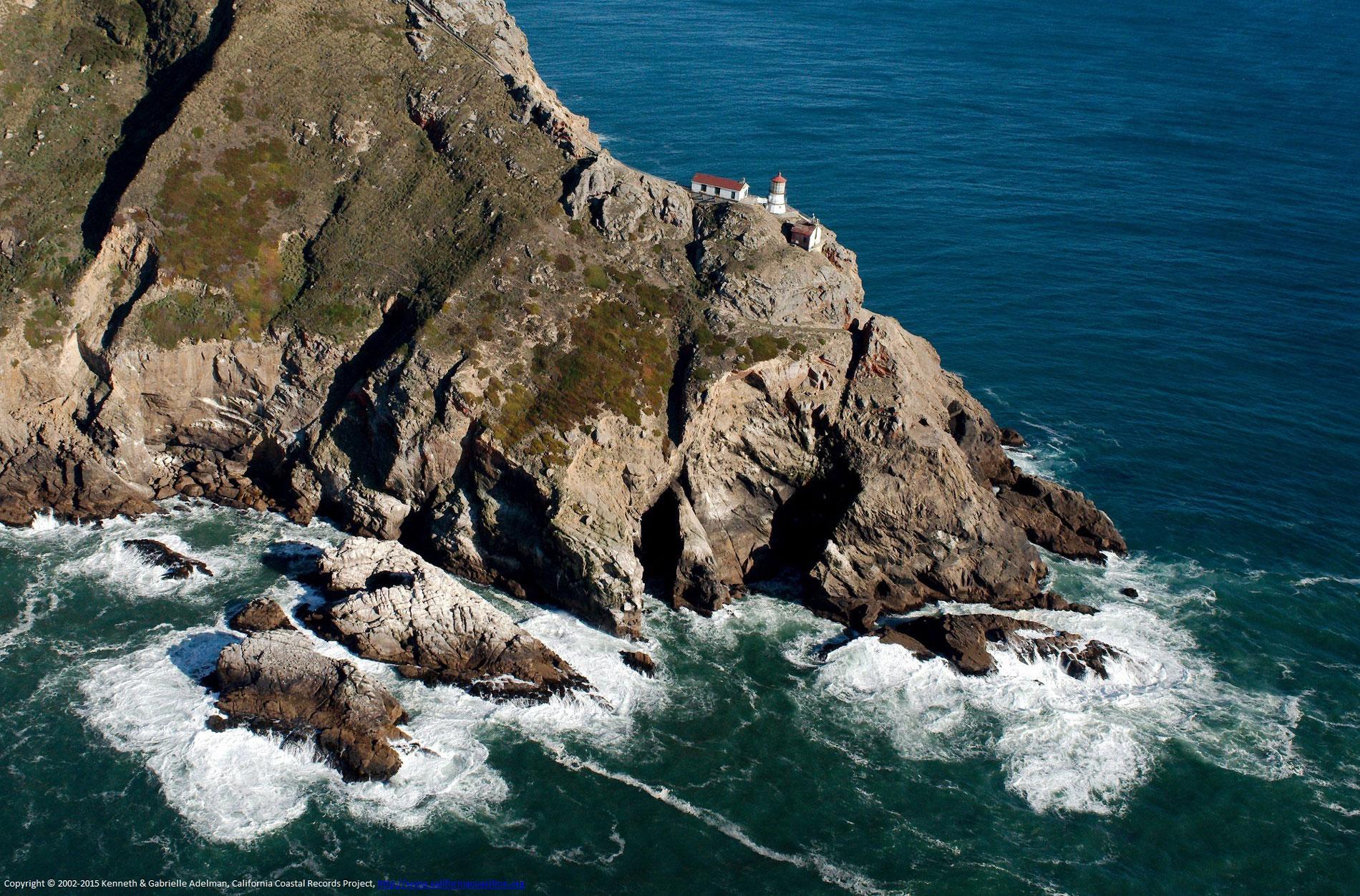Point Reyes is a prominent headland with a historic lighthouse located in Point Reyes National Seashore, a park and nature preserve of 71,028 acres (28,744 ha), about 35 miles (56 km) northwest of San Francisco and 12 miles (19 km) southwest of Inverness, California. The Point Reyes peninsula extends 10 miles (16 km) out to sea and historically posed a significant hazard to ships traveling along the foggy coast. The point was named Punto de los Reyes, meaning ‘Point of the Kings’, in 1603 by Sebastián Vizcaíno who anchored nearby with the San Diego, San Tomás, and Tres Reyes on January 6, the Day of the Three Kings. The point is formed by an erosion-resistant granitic basement representing the Salinian terrane that is exposed on the southern shore. The terrane is an ancient segment of the southernmost Sierra Nevada range that was transported north from Southern California by lateral movement along the San Andreas fault, which lies to the east and is aligned with the Olema Valley and Tomales Bay. Other exposures of the terrane occur at Bodega Head to the north and Mount Pinos to the south. Sedimentary rocks from the Eocene overly the granite on the northern shore of the headland and the terrane is completely buried further inland by sedimentary rocks from the Miocene and Pliocene.
The Coast Miwok people inhabited most of the Marin Peninsula at the time of European contact. The tribe that inhabited the area surrounding southern Tomales Bay were the Hookooeko, or ‘South People’. They were hunter-gatherers that lived in small bands without centralized political authority. In the springtime they would head to the coast to fish for salmon and gather shellfish and seaweed. During the winter they relied on acorns and wild game such as deer and rabbits. In 1579, Sir Francis Drake on the Golden Hind reputedly landed near Point Reyes during his circumnavigation and made contact with a Coast Miwok settlement. In 1595, the Spanish galleon San Agustin sought shelter from a storm and the captain mistakenly ran the ship aground thinking that Point Reyes was an island. The ship broke apart and the cargo was cast ashore, and eventually collected and used by the local Coast Miwok. In 1817, the Spanish built Mission San Rafael Arcángel and padres began recruiting the Coast Miwok for converts and mission laborers. In 1843, following the Mexican War of Independence, a land grant of 48,189 acres (19,501 ha) called Rancho Punta de los Reyes Sobrante was given to Antonio Maria Osio by Governor Manuel Micheltorena. In 1850, Osio sold the property to Andrew Randall who also acquired several other ranchos but did not have enough credit to make the payments. Randall was fatally shot by a creditor in 1856 and the property was broken up into smaller cattle ranches and dairy farms. In 1962, President John F. Kennedy authorized the acquisition of 53,000 acres (21, 450 ha) by the National Park Service with 18,000 acres (7,284 ha) leased back to ranchers.
Point Reyes remained unmarked until 1870, despite many shipwrecks. A lighthouse was authorized for the navigational hazard in 1855, but construction was delayed while the U.S. Lighthouse Board negotiated with landowners over a fair price. The original plan was for a two-story dwelling with an integral tower located at the top of the headland. However, experience at Point Bonita had taught lighthouse officials that fog could obscure an elevated light and the plan was revised to place the light closer to sea level. Two terraces were blasted from the cliff, one at 100 feet (30 m) above sea level for the fog signal building, and a second 150 feet (46 m) higher for the light tower. A wooden stairway with 300 steps was built into the cliff to reach the tower from the top, and 338 more steps were required to reach the fog building. Materials for the light tower and lightkeepers residence were landed at Drakes Bay and hauled overland to the headland. The residence was originally built atop the bluff and a concrete cistern of 100,000 gallons (454,609 l) and associated rain catchment were constructed nearby to provide water for the keepers and the steam fog signal. The sixteen-sided light tower was 30 feet (9 m) tall, made of iron and bolted to the rock, with a first-order Fresnel lens, manufactured in France in 1867 by Barbier and Fenestre producing a white flash every five seconds. The light at Point Reyes was manned for 105 years, and in 1975, the U.S. Coast Guard transferred ownership to the National Park Service. Read more about Point Reyes here and here. Explore more of Point Reyes and Point Reyes National Seashore here:

